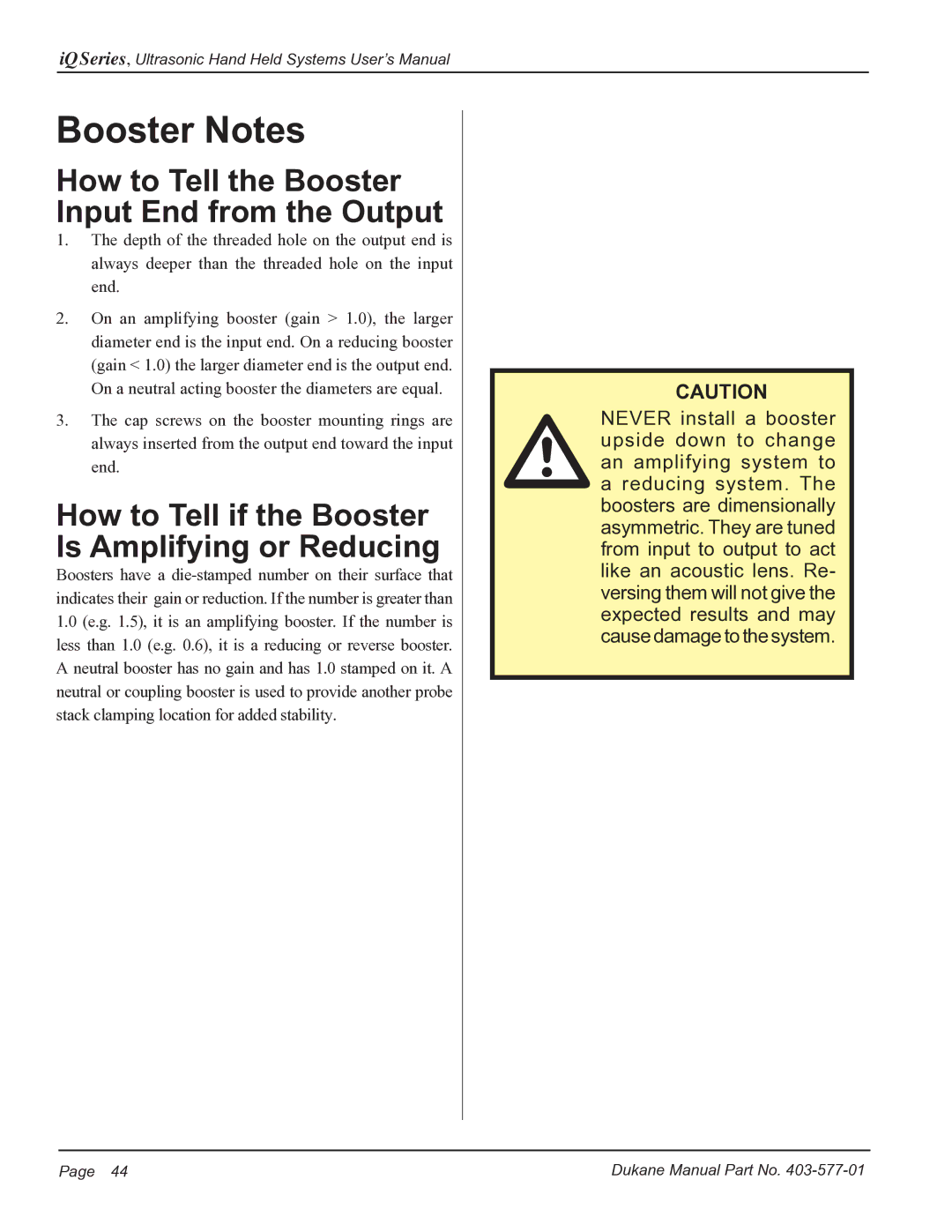
iQ Series, Ultrasonic Hand Held Systems User’s Manual
Booster Notes
How to Tell the Booster Input End from the Output
1.The depth of the threaded hole on the output end is always deeper than the threaded hole on the input end.
2.On an amplifying booster (gain > 1.0), the larger diameter end is the input end. On a reducing booster (gain < 1.0) the larger diameter end is the output end. On a neutral acting booster the diameters are equal.
3.The cap screws on the booster mounting rings are always inserted from the output end toward the input end.
How to Tell if the Booster Is Amplifying or Reducing
Boosters have a
1.0(e.g. 1.5), it is an amplifying booster. If the number is less than 1.0 (e.g. 0.6), it is a reducing or reverse booster. A neutral booster has no gain and has 1.0 stamped on it. A neutral or coupling booster is used to provide another probe stack clamping location for added stability.
CAUTION
NEVER install a booster upside down to change an amplifying system to a reducing system. The boosters are dimensionally asymmetric. They are tuned from input to output to act like an acoustic lens. Re- versing them will not give the expected results and may cause damage to the system.
Page 44 | Dukane Manual Part No. |
